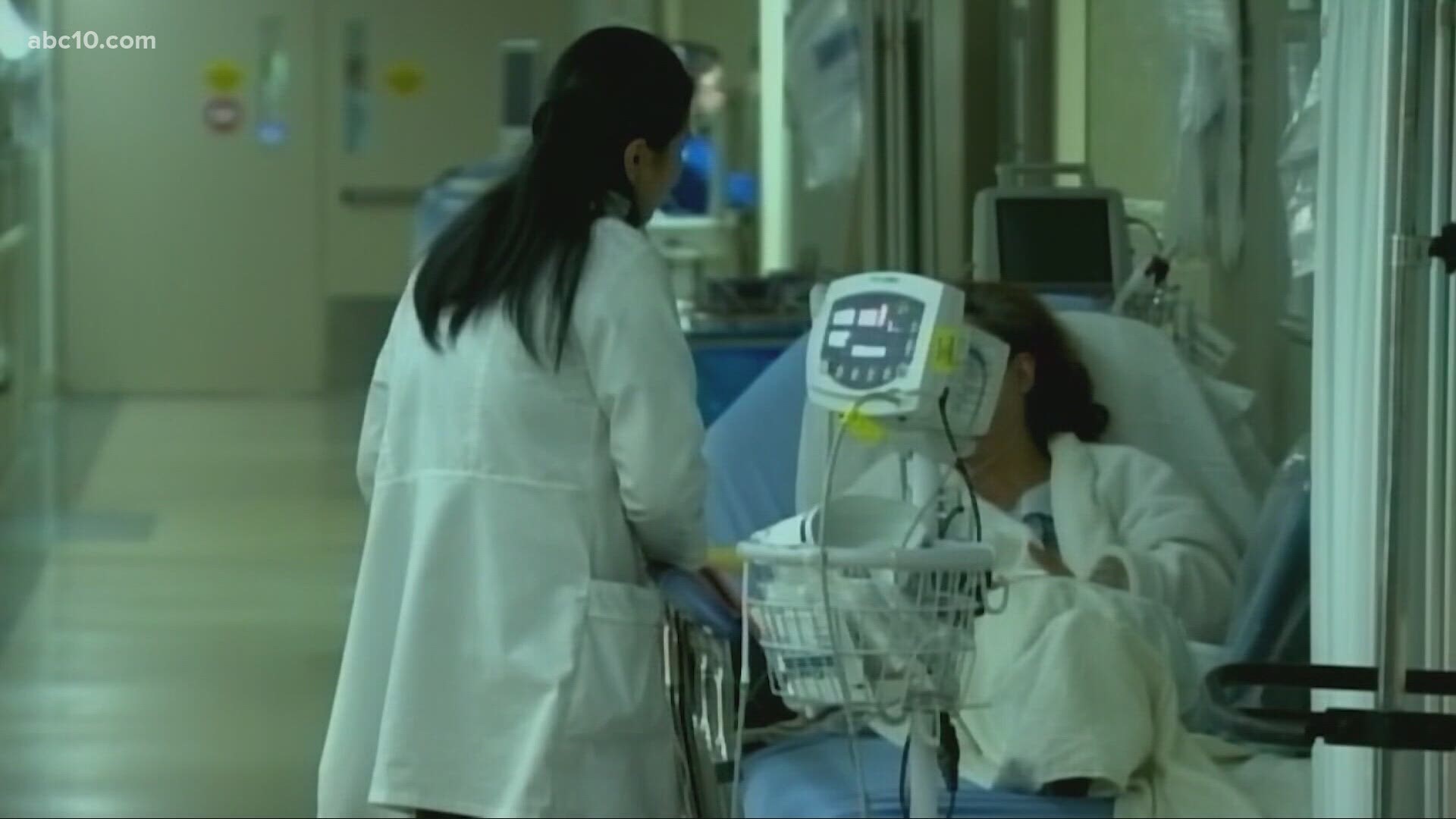SACRAMENTO, Calif — The California Department of Public Health announced on Thursday, June 25, that Sacramento County was added to the watch list for counties that need monitoring adjustments during the coronavirus pandemic.
There are several reasons why a county would be put on the list, but for Sacramento County, the main reason is the recent increase in hospitalizations.
In the past three days, the county's average increase was 29%. The state begins watching counties that have a three-day-average increase that is greater than 25%.
Since May 31, Sacramento County hospitals have seen a roughly 281% increase in patients with the virus going from 16 people in the hospital to 61 patients according to Sacramento County. The number of patients with the coronavirus on June 25 was nearing the peak of 77 patients which the county had on April 3 and April 6.
One of the main drivers of increased hospitalizations was community transmission due to holiday gatherings among large families, said the California Department of Public Health.
The key steps that the state department and county health officials plan to take to address the concern include:
- Increasing public messaging on the importance of social distancing, not gathering and mandate face coverings
- Increasing testing sites and education outreach in communities where positive cases are high
- Targeting educational outreach to ethnic communities
San Joaquin and Stanislaus Counties remain on the state's watch list for each county's transmission and hospitalization rates.
RELATED:
Sacramento County | Desktop dashboard
FOR THE LATEST CORONAVIRUS NEWS,
DOWNLOAD OUR APP:
►Stay in the know! Sign up now for the Daily Blend Newsletter
GET MORE INFO:
COVID-19 BACKGROUND
According to the CDC, coronavirus (COVID-19) is a family of viruses that is spreadable from person to person. Coronavirus is believed to have been first detected in a seafood market in Wuhan, China, in December 2019. If someone is sick with coronavirus, the symptoms they may show include mild to severe respiratory illness, cough, and difficulty breathing.
Currently, there is no vaccine; however, the CDC suggests the following precautions, along with any other respiratory illness:
- Avoid close contact with people who are sick.
- Avoid touching your eyes, nose, and mouth.
- Stay home when you are sick.
- Cover your cough or sneeze with a tissue, then throw the tissue in the trash.
- Clean and disinfect frequently touched objects and surfaces using a regular household cleaning spray or wipe.
- Wash your hands with soap and water for a minimum of 20 seconds.
WHY HEALTH OFFICIALS ARE SO CONCERNED
Some people have compared the low overall death toll to the flu's high annual death toll in the United States as a reason not to be concerned about COVID-19. However, doctors and health officials are concerned about three main reasons:
- There's no vaccine yet and won't be one for until early 2021, at the soonest. Scientists are still researching what other medications could help patients.
- Some people have built up immunity to the flu, but few have immunity to the COVID-19 version of coronavirus.
- Droplets spread both the flu and COVID-19, but COVID-19 might be spread in the air. Scientists are researching how COVID-19 spreads.



